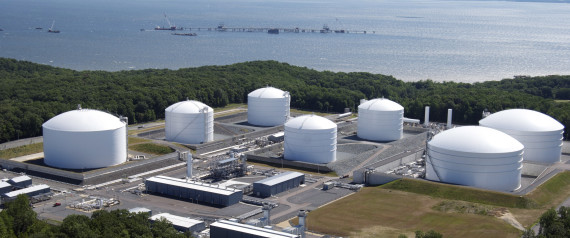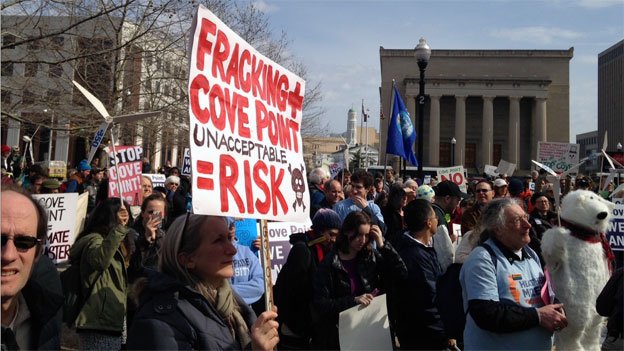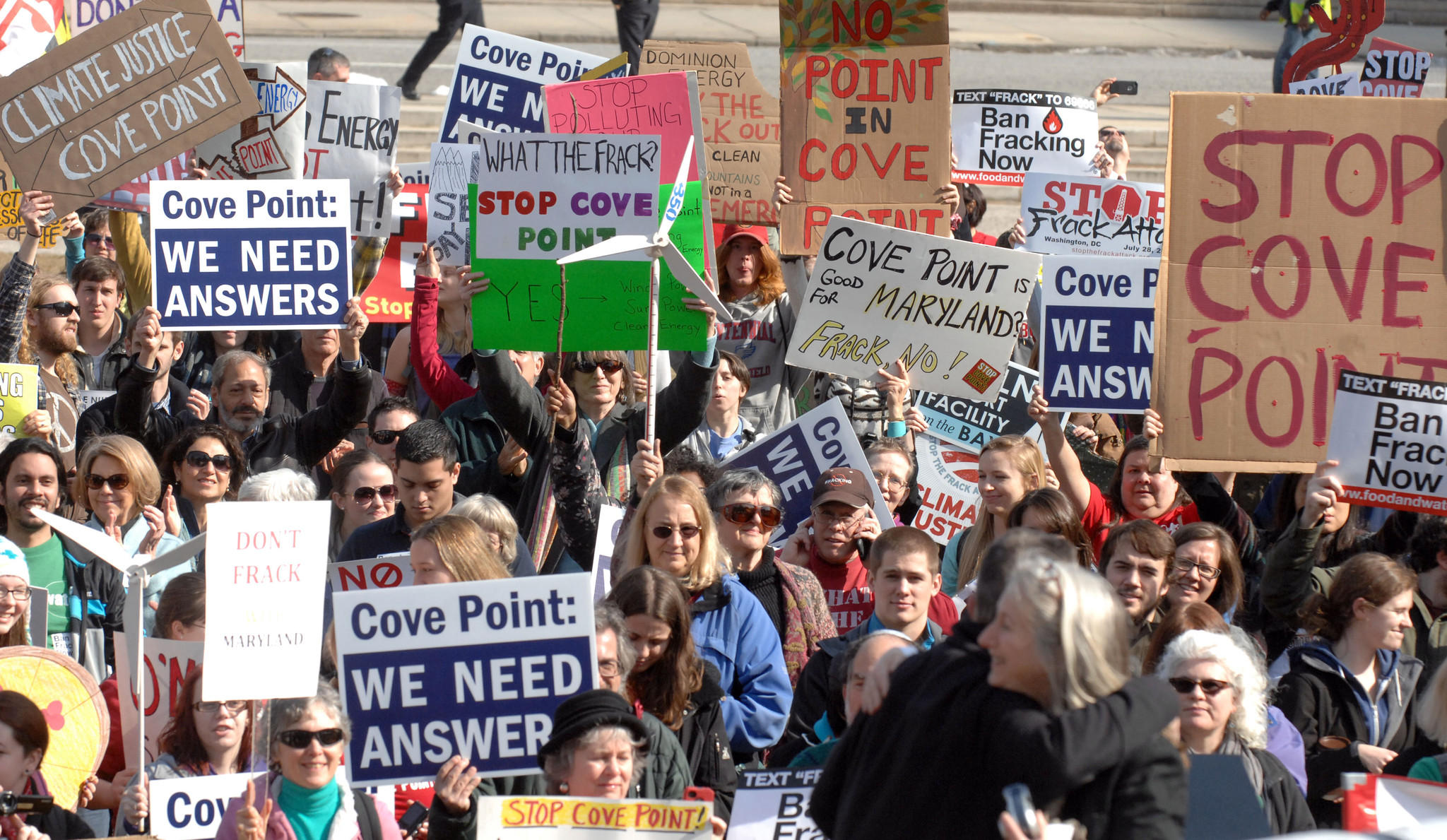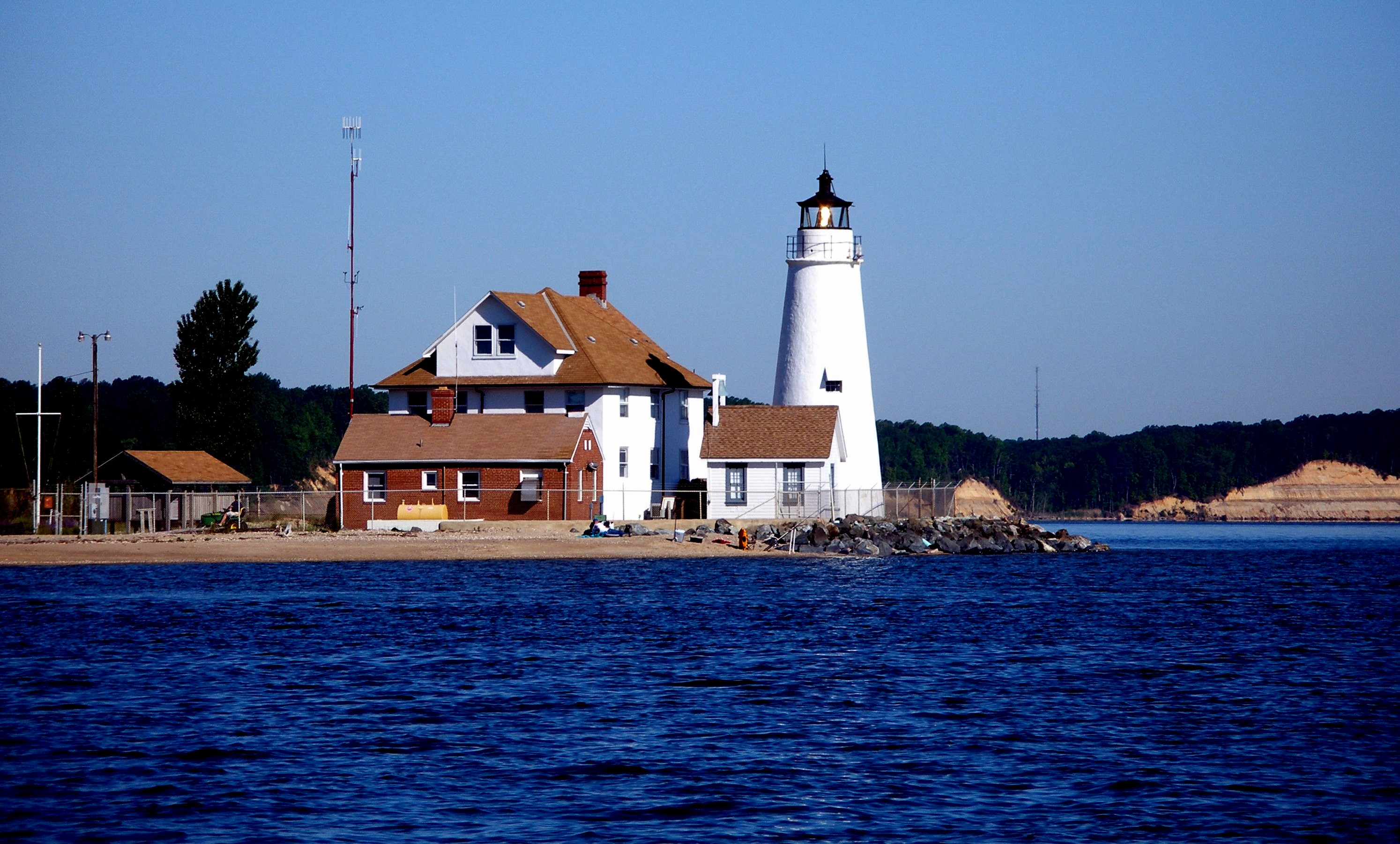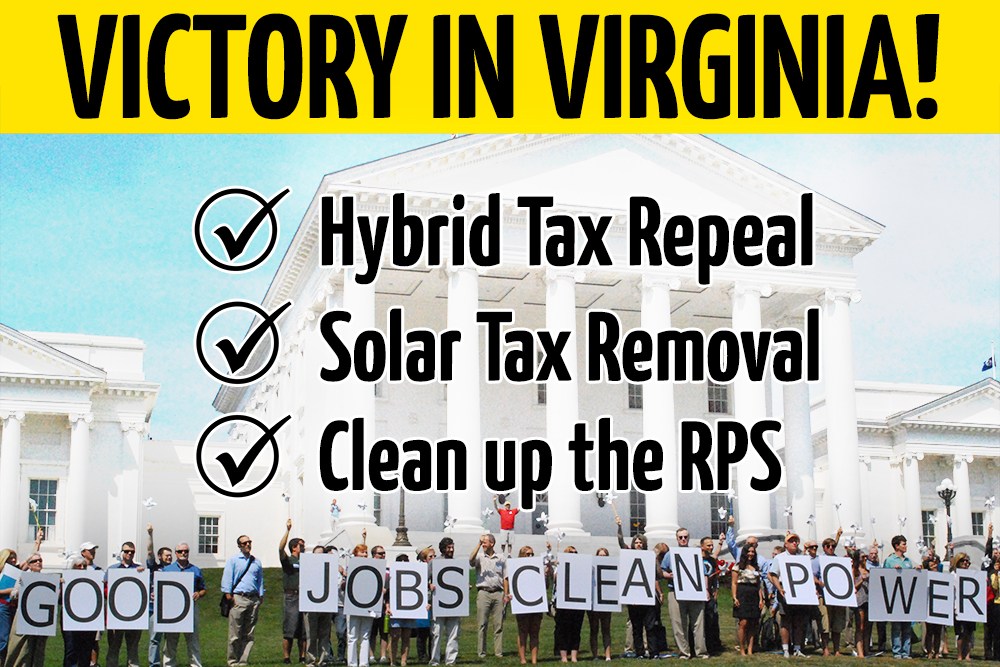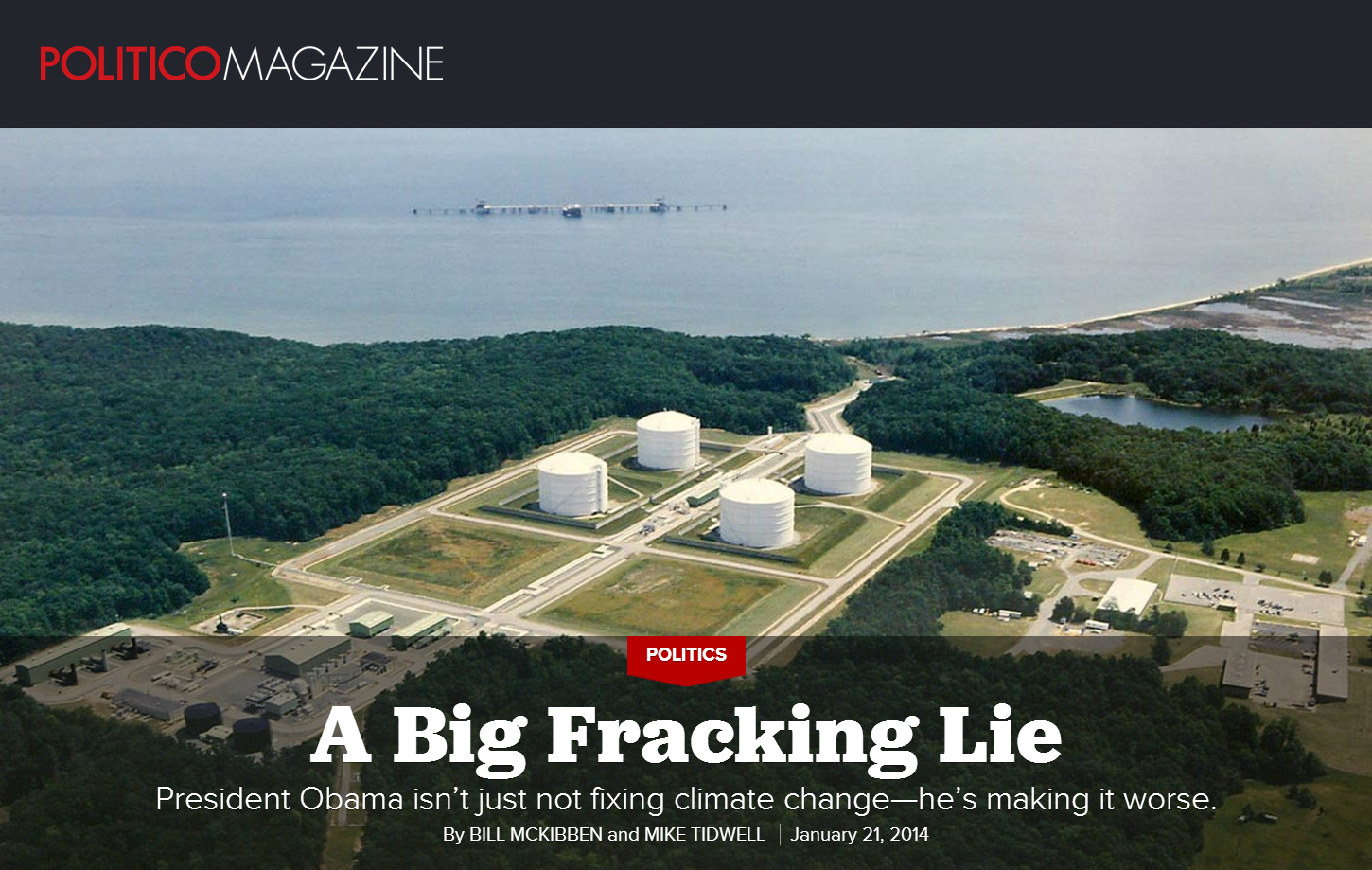The Huffington Post
by Caroline Selle
There was a time when “Stop the Keystone XL!” seemed like an unlikely rallying cry for the U.S. environmental movement. After all, plenty of pipelines receive permits every year without much outrage, so why would TransCanada’s request be any different? Plus, the fuel was coming from Canada, the country’s friendly northern neighbor. What could be the downside?
Plenty, according to environmental advocates. From the First Nations people who live near extraction sites in Canada, to Nebraskan farmers and ranchers concerned about the pipeline crossing a major aquifer, to families who live in Texas neighborhoods polluted by refineries, lots of people have a stake in the fight. And for climate activists, the pipeline is a test of the Obama administration’s seriousness about cutting greenhouse gas emissions and ending reliance on fossil fuels. The pipeline quickly became a symbol of resistance and the center of the fight over climate policy.
If the Keystone XL is approved (an answer is expected as soon as late May), what will the U.S. environmental movement rally around next? The power plant rules that the Environmental Protection Agency is working on will be an important step in reducing greenhouse gas emissions, but there’s no clear “ask,” as organizers like to say, other than “please finalize them.”
Enter the Cove Point liquefied natural gas (LNG) terminal. Located in Lusby, Md., Cove Point sits on the western shore of the Chesapeake Bay, only a 90-minute drive from Washington, D.C. Local environmental groups want to make Cove Point the next Keystone XL when it comes to organizing opposition.
Continue reading
Environmental Groups Call For Rejection Of Cove Point Expansion
WAMU 88.5
By: Jonathan Wilson
The Maryland Public Service commission is in the midst of deciding whether Dominion can move forward with a $3.8 billion expansion of its Cove Point Liquefied Natural Gas facility in Calvert County and environmental groups continue to put pressure on state officials to reject the plan.
Hundreds of protesters gathered on War Memorial Plaza in downtown Baltimore, many holding signs with anti-fracking slogans, or mini cardboard windmills to show their support for energy alternatives.
Mike Tidwell, director of the Chesapeake Climate Action Network, compared the current fight to stop Dominion’s natural gas export plans to the battle, decades ago, to get the truth out about the health risks of tobacco.
“And that’s why we need an Environmental Impact Statement, because it is the equivalent of a Surgeon General’s report,” Tidwell said. “We need a Surgeon General’s report for Cove Point, when that comes out, Marylanders will be appalled and repelled by this idea and it won’t get built.”
But Dominion maintains that voices like Tidwell’s are simply a vocal minority, and point out that exporting more natural gas is part of the President’s clean energy agenda.
Jeff Guido is a spokesman for the Maryland state pipe trades association — a union whose members would get many of the thousands of construction jobs that would come with the project. He says the economic benefits of Cove Point would ripple across the state.
“We need it, we need it bad,” Guido said. “You’ll see that when a construction worker goes to work, and he knows he’s got some employment in front of him — they’re all gonna go out and buy a new pick up truck, it’s just what we do.”
After this week’s evidentiary hearing, the Public Service Commission will gather input from residents close to Cove point at a public hearing in Lusby on March 1.
Hundreds rally to oppose Cove Point project
The Baltimore Sun
By Jamie Smith Hopkins
An estimated 500 people rallied Thursday in Baltimore against plans to export liquefied natural gas from a Southern Maryland facility, chanting and carrying signs past the office tower where state regulators were considering one aspect of that proposal.
The authority to approve or reject the project lies with the Federal Energy Regulatory Commission. But Maryland’s Public Service Commission has the say over a 130-megawatt power plant that energy company Dominion says it needs for the export operation.
The proposal has drawn powerful support — including from Rep. Steny Hoyer, a Southern Maryland Democrat — as well as opposition from the Sierra Club and other groups, largely on environmental grounds. Both sides used this week’s hearings as an opportunity to get their message out.
Dominion, which owns the Cove Point complex, held a news conference Wednesday with supporters, including a construction union official and a Maryland manufacturer. They characterized the project as an economic boon and said exporting natural gas to replace coal would help the environment.
The rally against the project drew people from across the state — many opposed to a controversial technique known as “fracking” used to extract natural gas — and temporarily closed streets in downtown Baltimore at lunchtime. Speakers included Del. Heather Mizeur, a Democrat who is running for governor.
“I’ve been doing this for 12 years,” said Mike Tidwell, executive director of Chesapeake Climate Action Network, which helped organize Thursday’s event and estimated the crowd at about 700. “I’ve never been at an environmental rally … this big.”
A police spokesman could not provide a crowd estimate Thursday. Dominion spokesman Chet Wade said it counted fewer than 300 people.
Opponents contend that exporting natural gas from Cove Point would increase demand for hydraulic fracturing, a method of extracting the gas that environmentalists say pollutes groundwater and air but that the industry says is safe.
Dominion officials said the project should not be seen as a “proxy” for fracking, including whether to allow the method in Maryland. Cove Point exports could come from as far afield as the Gulf Coast through the country’s network of pipelines, said Pamela F. Faggert, the company’s chief environmental officer.
“Nor would stopping the Cove Point project likely reduce fracking elsewhere,” Faggert said. “Cove Point exports would account for only a small sliver of the gas that could be produced in the United States. Without Cove Point, the only question is where the natural gas would go instead.”
That argument didn’t fly with rally participants. Paul Roberts, who runs a winery in Western Maryland and sits on the state commission studying fracking, said he’s concerned the state will be under far more pressure to allow the technique if natural gas interests can export from Cove Point.
“It would be very terrible if all the work we’ve put in is undermined,” Roberts said.
Cove Point is an import facility for liquefied natural gas. The market for bringing that product into the country has dwindled as fracking fueled a natural gas boom in the U.S.
Expanding Dominion’s Calvert County complex to allow exporting would cost as much as $3.8 billion. The company would pay an additional $40 million in annual property taxes for five years, then receive a tax break of 42 percent for nine years.
Drew Greenblatt, president of Marlin Steel Wire Products, a Baltimore manufacturer, is among those who spoke in favor of Cove Point at Dominion’s news conference.
“A thriving natural gas industry, one with access to all potential markets, including overseas markets … will mean more demand for our products in America,” he said. “We should take advantage of it, and we’re very lucky that this has happened to our state.”
Hearings in the Public Service Commission case began Thursday. A hearing for public comment is scheduled for March 1 at Patuxent High School in Lusby, near Cove Point.
The agency must make a decision on the power plant by May 30. The FERC has not set a timeline for a decision, Dominion said.
The early hours of Thursday’s hearing revolved around the project’s impact. Sierra Club attorney Joshua Berman, highlighting reports suggesting that exporting would cause domestic natural gas prices to rise and promote the use of coal, asked a Dominion executive whether he agreed with those conclusions.
Michael D. Frederick, vice president of LNG operations at Cove Point, said the U.S. Department of Energy — which gave Cove Point its OK to export — is charged with ensuring that the move is in the country’s interests.
"We Need a Surgeon General’s Report for Fracked Gas Exports at Cove Point"
This piece by CCAN Director Mike Tidwell, Katie Huffling, Program Director for the Alliance of Nurses for Healthy Environments, and Joelle Novey, Director of Interfaith Power and Light, was originially published on DeSmog Blog.
Fifty years ago the US Surgeon General’s report on cigarettes and lung cancer changed America forever. Before the report, Americans generally thought smoking was okay – maybe even good for us given ads like, “More doctors smoke Camels than any other cigarette!” But then the hard evidence – the undeniable facts – came to the surface and we changed.
That’s the good news. The bad news for Maryland is that we have a new “Camel cigarette” problem. For the past several months, a powerful corporation called Dominion Resources has been telling Marylanders that we can light something else on fire – something called “fracked gas” – and that it will be good for public health and the environment.
Continue reading
Hundreds gather in Baltimore to say "Stop Cove Point"
Elisabeth Hoffman is a blogger with Climate Howard. This post is also available on their blog.
A boisterous, determined, chanting, sign-waving crowd of at least 700 people from across the state and beyond converged on sunny Baltimore today to say that Dominion Resources’ planned Cove Point export facility for fracked gas is a threat to our health, our economy, our climate and our future.
“Maryland is here today because Maryland is at risk,” shouted Mike Tidwell, director of the Chesapeake Climate Action Network, at the rally at the War Memorial Plaza downtown.
Nearby, the Public Service Commission was considering whether Virginia-based Dominion’s planned 130-megawatt gas-fired power plant and liquefaction facility would be in the “public interest.”
Continue reading
Cove Point Activist Profile: Vivian Stockman
On February 20th, hundreds of activists from across the mid-Atlantic will come to Baltimore to rally outside the Public Service Commission as they decide on key permits for the proposed Cove Point facility.
If you haven’t already, sign up to join us and be a part of the biggest environmental rally Baltimore has ever seen.
As we get ready for February 20th, we’ve asked a few activists coming to the rally to tell us their story and explain why this issue is so important to them.
What’s your name? Vivian Stockman
What’s your age? 52
Where do you live? Roane County, WV
What do you do for a living? I work for OVEC, the Ohio Valley Environmental Coalition, based in Huntington, WV, www.ohvec.org.
Why is Cove Point important to you? How will your immediate community be affected? Is there already fracking in your neighborhood or do you live in an area that has a gas basin beneath it?
For years, OVEC members have been working to end mountaintop removal coal mining and coal prep plant waste “disposal” via underground coal slurry injection or giant coal sludge dams. We do this work because these extreme coal industry practices are ruining human health and destroying and poisoning our life support systems – our water, land and air. As deep shale gas fracking moved into West Virginia, we began working on this issue too, for the exact same reasons. People are getting sick and once pleasant rural communities are turned into industrial waste zones.
What is your biggest concern surrounding the Cove Point project?
Cove Point would drastically increase the pressure to drill, baby, drill, no matter the consequences. Cove Point would mean a mad dash to export natural gas and that ultimately would mean that our birthright here in West Virginia, clean water, would be sacrificed for the sake of short-term corporate profit.
What message would you deliver to the fossil fuel industry and the folks at Dominion?
Clean water is essential to life. As your industries continue to use our streams, rivers and groundwater for dumping toxic waste, you are creating a vast network of people from all walks of life who are rising up. Water unites us. Poison water unites us in action. We will defend our right to clean water, and we demand truly cleaner renewable energy now. We stand in this defense, we make this demand as if our lives depend on it, for they do.
Remember to sign up now to join Vivian and hundreds of other activists in Baltimore on February 20th. We’ll see you there!
Virginia: Crossover 2014
What an incredible few weeks it’s been in Virginia’s General Assembly! I’m pleased to report we’ve been successful on many of our priority bills this session. Wednesday is officially “crossover” which means that each chamber can only hear bills that survived in the other chamber. Think of it as the political equivalent of “halftime”. So with that, let’s recap the first half of session to date.
Continue reading
Climate Insider: Cove Point Goes National, No to Fracking, Solar Jobs
Maryland
Last week, CCAN Director Mike Tidwell made huge news with a piece he co-wrote with Bill McKibben entitled, “A Big Fracking Lie.” The article has been shared almost 10,000 times on Politico and is one of the highest shared pieces of 2014. In it, Mike takes the Cove Point fight national, explaining why exporting fracked natural gas is a bad deal for Americans. Read it and share it with all your friends who are concerned about fracking!
Continue reading
Export opponents tie plant explosion to Md. LNG project
By Jenny Mandel
A coalition of environmental and other groups is stepping up a campaign against exporting natural gas from a facility near Lusby, Md., raising questions about the track record of the owner, Dominion Resources Inc., over a fire at an unrelated West Virginia facility.
The Blue Racer natural gas processing plant in Marshall County, W.Va., caught fire during the night in September 2013, triggering an automatic shutdown of the facility before the fire eventually burned out, according to Dominion, which operates the plant as a joint venture with Caiman Energy, an operator in the Utica Shale formation.
Cove Point project opponents raise safety concerns
The Baltimore Sun
By Jamie Smith Hopkins
The way energy company Dominion sees it, exporting liquefied natural gas from its Southern Maryland complex wouldn’t be that big of a shift from the importing it does now. Same pipes, same storage tanks, same terminal.
But the project at Cove Point strikes opponents as a sea change. Now those fighting the proposal on environmental grounds are joining forces with some Calvert County residents worried about hazards from the liquefied natural gas, or LNG, which on rare occasions has caused deadly fires or explosions.
Dominion wants to convert natural gas to its chilled liquid form at the expanded facility — which will cost as much as $3.8 billion — before it’s exported in a process the company said is safe.
“We have public safety in mind, but there’s nobody more interested in protecting us than us,” said Michael D. Frederick, vice president of LNG operations at Cove Point, noting that his office is a few hundred feet from the planned expansion, and his home is a few minutes away by car.
But the plans make Lusby residents Dale and Sue Allison anxious.
“We live very close to it,” said Dale Allison, a retired Navy engineer who moved to the area in 1997, during a less active period in Cove Point’s history. “We can see the tanks out of our kitchen window.”
Unlike the LNG import terminal proposed years ago for Sparrows Point, which drew political ire, Cove Point has high-powered support. Rep. Steny Hoyer, a Democrat who represents the area and is the House minority whip, likes the idea. So do Calvert County’s commissioners, who welcome the project as an economic boon and who approved a tax break for the expansion.
The opposition includes Democratic gubernatorial candidate Del. Heather Mizeur, who argues that Maryland can’t afford the big uptick in greenhouse gases the power-intensive operation would produce locally. A Calvert County Circuit Court judge turned aside a Sierra Club effort to block Dominion’s plans.
Cove Point is among approximately two dozen LNG export facilities proposed across the country, all driven by a massive change in the country’s energy fortunes.
Cheaper, more abundant natural gas that has come with hydraulic fracturing, or “fracking,” has made importing much less necessary — and exporting look like a good business bet. U.S. natural gas prices have been running about $3.50 to $4 per million British thermal units, compared with around $16 in Japan, according to the U.S. Energy Information Administration.
The agency forecasts that the United States will become a net exporter of LNG in 2016. It also predicted that exporting would increase prices for domestic consumers.
Dominion and other firms seeking to reassure terminal neighbors about safety say the likelihood of an incident at an LNG facility is extremely low, and the odds that such a problem would spread off the site are even lower.
But the few accidents that have occurred fuel community fears of explosions and vapor clouds of leaked LNG.
The only LNG incident at a U.S. facility that resulted in deaths off site happened in 1944, when a fire caused by a storage tank failure in Cleveland killed 128 people and injured at least 200 more, according to the Federal Energy Regulatory Commission. The tank wasn’t suited for very low temperatures, the FERC said, a problem fixed in modern facilities.
Cove Point opponents point to a more recent explosion at an Algerian liquefaction facility, which killed 27 workers in 2004. Opponents also note that a natural gas processing plant in West Virginia — a different type of facility, but newly opened by Dominion in a joint venture — suffered an explosion and fire in September.
“They were … telling the community this was going to be a world-class, highly reliable facility, and then two months after they turned it on, it blew up,” said Mike Tidwell, executive director of Chesapeake Climate Action Network, which opposes the project for environmental and safety reasons.
The blast shook houses but caused no injures. Dominion said the damage was limited to a small area on the site.
Chet G. Wade, a Dominion spokesman, said that demonstrates that in the “very, very, very rare incidence there’s an incident,” the company’s safety measures keep problems contained.
But what sparked the accident has yet to be explained.
“The official report hasn’t been finished,” Wade said.
The Algerian blast was caused by a leak that allowed gas to flow into the boilers through an air intake.
That won’t happen again, Frederick said.
“One of the things that changed worldwide after that was gas detection at all air intakes of fuel-burning equipment,” he said. “If there were a cloud, the gas detection would sense that and shut it down.”
Frederick said Cove Point has duplicates of each safety system, just in case.
“If all that failed — I’m telling you it won’t — but if all that failed, an issue would be contained on the site,” he said.
Though chilling gas to a liquid is more complex than reversing the process, Frederick said exporting is no more inherently dangerous than importing.
James Fay, a professor emeritus of mechanical engineering at the Massachusetts Institute of Technology, disagreed. He said an LNG export facility has the potential to be much more dangerous. Propane gas is generally used as a refrigerant in the liquefaction process, he said, and propane can catch fire.
“This is not a simple little addition,” Fay said of Cove Point. “An export terminal is entirely different from an import terminal.”
Cove Point’s existing storage tanks, including three added by Dominion after it bought the facility in 2002, would be used for the export business. That’s another point of contention, because the tanks use single-wall containment, without the extra layer of protection built into other models.
It alarmed neighbor Dale Allison to think the company is using what he called “the least-safe tank.”
Frederick said each tank is set in a pit that’s designed to contain the maximum amount of liquid in a spill — 110 percent of the tank’s capacity.
The design would prevent vapor clouds from traveling off site, he said, and any fire would stay put as well.
“The bottom line is, we modeled the situation so what you just described doesn’t happen,” he said.
Nevertheless, opponents aren’t satisfied.
Tidwell, with the climate action network, criticized the FERC’s decision to take the less extensive of its two review options.
“They’re fast-tracking this,” said Tidwell, whose group is organizing a Baltimore rally against the expansion next month. “Is this happening so fast that there’s some major safety risk that has not been thought through?”
The environmental assessment that FERC staffers are working on will consider a variety of issues, safety included. But such assessments don’t examine as many issues as a full environmental impact statement, and offer people less time — and no public hearings — to comment on it.
Dominion executives said the environmental assessment is no quick or slapdash effort. The company already has filed 21,000 pages of documents in the FERC case that started in 2012, they said.
“The idea that it’s not thorough is just not true,” Frederick said.
June Sevilla, a chemical engineer who lives near Cove Point, worries about a potential fault near the facility.
There likely is a fault in the area, said Peter Vogt, a semiretired marine geophysicist who lives about 10 miles from Cove Point. There’s evidence of one in a valley nearby, but more work would need to be done to confirm that, as well as how far it reaches and how long it’s been inactive, he said.
Vogt, who dislikes the tax break but is otherwise open-minded about the Cove Point proposal, thinks the possible fault leaves a nagging question and that more research should be done.
Dominion’s Frederick said the design already takes earthquakes into account, along with hurricanes and tornadoes. And the company said it thoroughly considered seismic threats along with the FERC and the Maryland Department of Natural Resources.
Dominion, which negotiated exporting contracts for the facility with companies in India and Japan, is hoping for a decision from the FERC in the near future. The firm is ready to start construction this spring, if approved, and begin exporting in 2017 — adding about 75 jobs to the 100 there now.
The county’s coffers would get a boost, though partially muted by the tax break. Dominion would pay $40 million more in annual property taxes for five years, increasing the rural Calvert County’s total property tax revenue by more than 25 percent. That would be followed by a 42 percent tax break for nine years.
Cove Point’s import contracts begin expiring the year Dominion hopes to start exporting and will all be gone by 2023. Unless the natural gas market takes another dramatic turn, the company doubts it will import more.
“There’s no economic sense to have somebody import gas to the United States at the same time somebody’s exporting gas from the United States,” Wade said.

